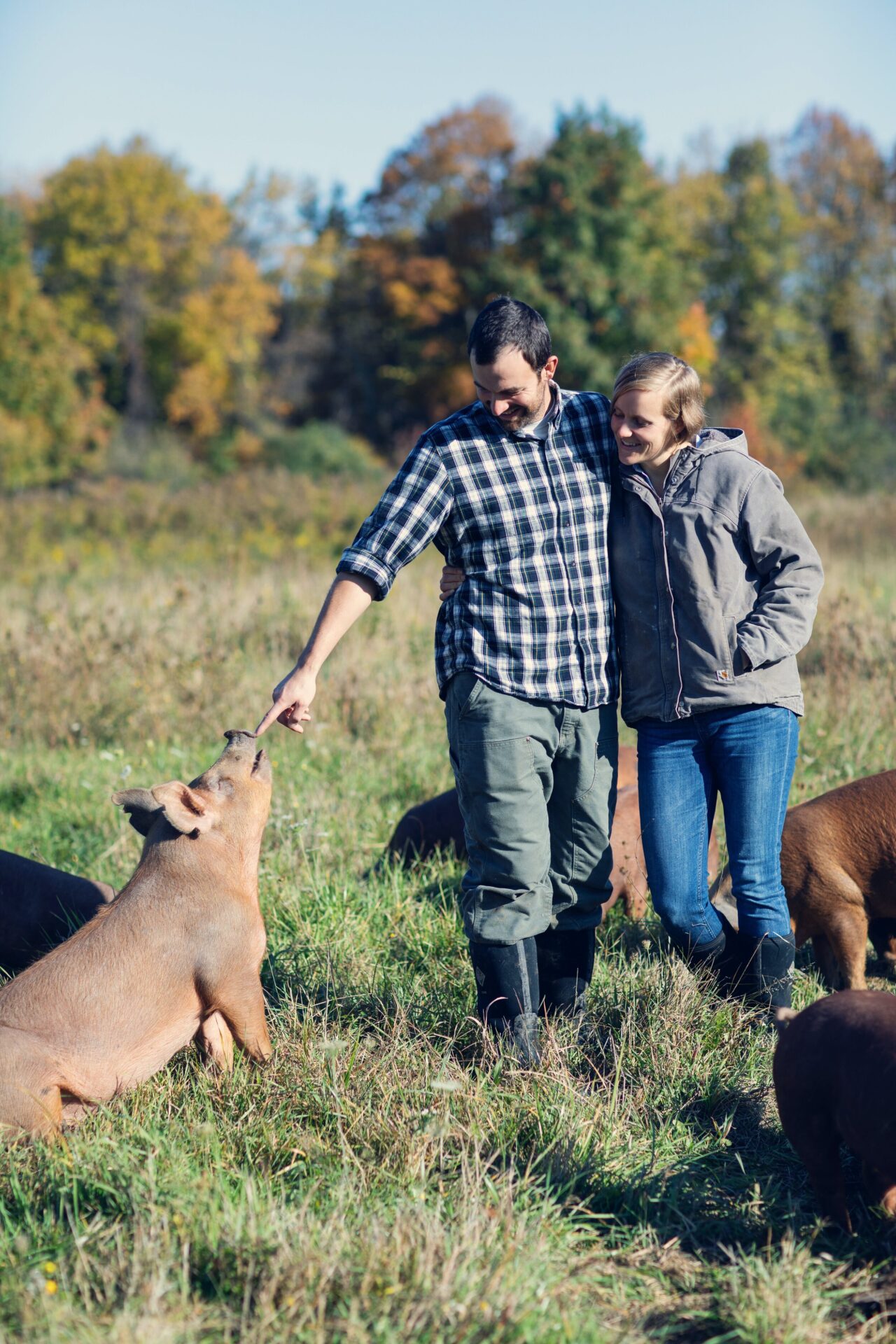I was a little surprised when we started our pig-breeding program and Greg told me that he had an important rule of thumb (“NO PINK PIGS”) for picking out the genetics that would shape the future of our farm.
Considering the fact that he’s partially color blind, his opinions on this matter surprised me at first. But now that I understand the difference between the pink pigs (known as Yorkshires) and the multicolored pigs, I can see why pigs like Wilbur would be a disaster on our farm.
It turns out, the pink pigs are an industrial breed. You’ll find them exclusively on factory farms and sometimes on smaller farms too because they’re high performers in terms of production – meaning they have big litters and gain weight quickly.
Flavor, though, is not their strong suit. And it’s not just that…their light coloring makes them more susceptible to sunburns and dehydration and their limited fat deposits put them at higher risk for frostbite and illness in the winter. Many of their wild piggy instincts – like the ones to root and graze – have been lost.
They’d be a liability here since our farming philosophy involves keeping the pigs happy on pasture, in the fresh air, year round. Which is why Greg has always opted for the heritage breeds, instead.
These pigs (mostly Old Spot and Tamworth crosses on our farm) come out in all sorts of funky colors, skin and hair patterns. They’re hardy, have low stress temperaments and most importantly, they still love to root and graze on pasture.
So much so that lately, when they’ve eaten their way through their paddock, we find them sitting at the fenceline, just waiting for Greg to open them onto fresh pasture.
Our numbers wax and wane through the season. But at the end of this year, we will have shared about 100 pigs with you – almost all of them bred, born and raised right here with us. And not one, you see, has ever been pink.
